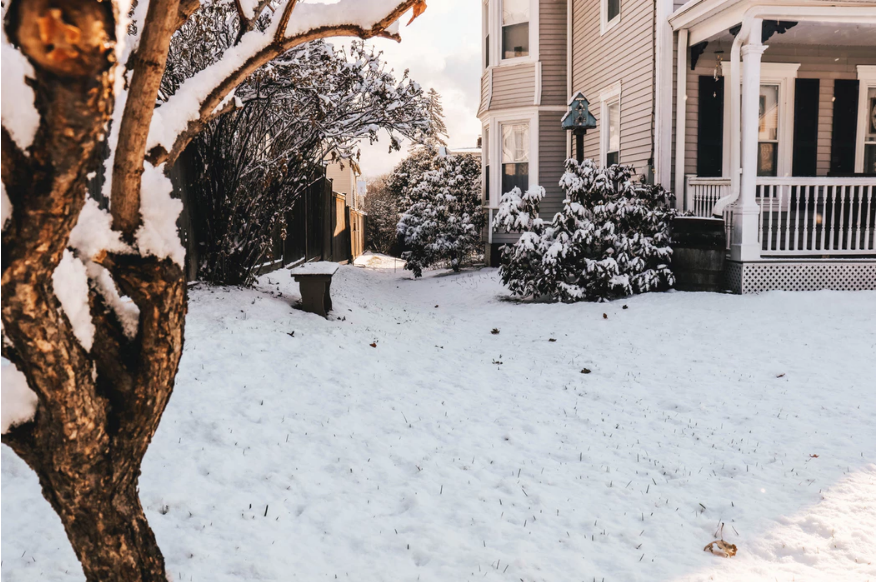Is It Too Cold To Paint My Michigan House?

There are loads of things that can motivate you to paint. Could be you are feeling bored with your existing exterior or interior décor. Or maybe your walls or your siding are beginning to show their age. Whatever is inspiring you to paint your home there are no right or wrong styles to try or colors to use. However, it is worth saying that there are certainly right and wrong times to paint your house, especially when it comes to the weather.
Ideal painting specifications are not dependent on wind and rain only. A day that’s too hot or too cold can also make paint to fail since it will not cure appropriately. While most of the paints are formulated to dry fast, temperatures influence this time significantly. Paint that dries too quickly will crack and chip away in the long run while paint that dries too gradually often blister and eventually peel off.
Ideal Temperatures
The perfect time to paint your home is when you have a day with temperatures that range between 60 and 85 degrees, no wind and low to moderate humidity. You will find that most paint labels often recommend temperatures ranging between 50 and 90 degrees Fahrenheit, however, to attain a successful adhesion, ensure that you stay within the extremes of this range since surface temperatures can be 10 to 20 90 degrees Fahrenheit higher than the air temperature. In isolated regions that do not receive any sun, the surfaces might be colder than the air temperature.
Too Cold Temperatures
When you paint your Michigan home when the temperatures are too cold, the paint will not cure suitably because the paint will take longer to dry. This condition will leave your newly painted surface susceptible to insects, dirt and other ruins. Paint that has not cured properly is also vulnerable to bubbling, cracking, chipping and peeling. Water-based paints should be applied when the temperatures are not lower than 50 degrees while oil-based paints require temperatures that are not lower than 40 degrees Fahrenheit degrees to appropriately cure. Cooler temperatures will not only hinder your paint from curing, but they will also reduce the water absorption and the life expectancy of the paint which can lead to mildew growth.
Too Hot Temperatures
Hot temperatures usually affect the paint adhesion predominantly because it makes the paint to dry too fast. Temperatures above 90 degrees can make the paint blister and bubble, which can lead to peeling when the paint cures. The wall surfaces usually heat up with the sun, so the ideal way to prevent bubbling and blisters is to ensure that you follow the sun around your home to ensure the surface is not getting overheated and you are not painting in direct sunlight. It’s possible to paint the north side of your home at any time during the day, but the most appropriate time to paint the east side of your home is late morning. Give your paint enough time to dry off to the touch before the temperatures of nighttime cool enough to form dew.
Other Considerations
When you are making plans to paint your Sterling Heights house, the temperature is not the sole factor to put into consideration. Since the paint requires time to cure properly, anticipated nighttime temperatures are as significant as daytime temperatures. Most of the paints require not less than 24 hours to cure properly. Once the temperatures drop below the ideal range during the night, however perfect the temperatures were during the day for painting, this will eventually affect the drying process of the paint.
When the temperatures drop drastically during the night compared to temperatures during the day, dew forms once the sun goes down. In spite of the temperatures being ideal during painting, the paint will stop coalescing, letting moisture into the uncured paint and eventually leading to adhesion problems. To get the best results, ensure that you paint when the temperatures are ideal at least for 72 hours. That will ensure that your paint dries well, and you have enough time for second coats, touch-ups or even unexpected delays.
In conclusion, the minimum and maximum temperatures recommended for painting vary depending on the type of paint (latex or oil), the particular brand of paint utilized. However, the general rule of the thumb is that latex based paint should be applied when the temperatures are between 50 and 85 degrees and oil-based paint between 40 and 90 degrees. The perfect drying will occur when the humidity is between 40 and 70 percent. Too low or high a temperature can make paint fail to bind together appropriately, which can cause cracking and peeling.
